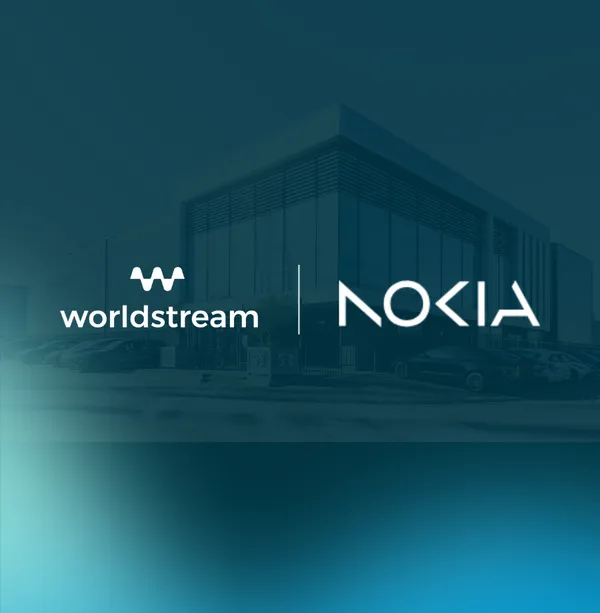DDoS Attacks: 8 Ways to Prevent Them

Knowledge blog

Distributed Denial of Service (DDoS) attacks may pose a serious risk to an organization’s online operations. This blog article examines eight all-encompassing tactics to prevent these kinds of attacks, with an emphasis on preventative actions like vulnerability assessments and hardening IT systems, installing firewalls and DDoS scrubbing technology, as well as utilizing high network bandwidth capacity for your traffic.
Executive Summary – In summary, the prevention of DDoS attacks requires a multi-layered strategy that incorporates both tactical and technical countermeasures. We’ve covered eight strategies in this blog post to stop DDoS attacks from occurring or harming your IT infrastructure. First, to proactively detect and mitigate possible risks in different IT infrastructure components, including networks, servers, applications, and databases, vulnerability assessments can be valuable. In addition, through a thorough and ongoing process, systems hardening will lower the attack surface by guarding possible weaknesses in every facet of technology.
Installing firewalls and sophisticated anti-DDoS solutions, such as offered by Worldstream’s Firewall-as-a-Service (FWaaS) and Worldstream DDoS Shield solutions, strengthens the protection against intricate attack paths, while increasing network bandwidth and server capacity, guarantees resistance against under the radar as well as high-volume DDoS attacks. As attack characteristics may change over time, our intelligent clustering technology allows for effective network traffic management and prompt reaction to all types of DDoS attack now and in the future.
Additionally, switching to a hybrid cloud environment can allow you to take use of its built-in security and adaptability features, which might allow for effective traffic distribution and management in the case of a DDoS attack. It may guarantee a strong and flexible defensive mechanism against DDoS attacks, together with a well-organized DDoS event response strategy that consists of a core team, a whitelist of important IP addresses, and an extensive record-keeping system. Therefore, the key to successfully defending against the always changing environment of DDoS attacks is a comprehensive and dynamic approach that incorporates technology, strategy, and ongoing adaptation.
Eight tactical methods to mitigate DDoS Attacks
Together, the following eight tactical and technical countermeasures may create a strong barrier against DDoS attacks and the damage they could do to your IT infrastructure.
1. Establish IT Infrastructure Vulnerability Assessments
Vulnerability assessments may represent a fundamental method in the field of distributed denial-of-service (DDoS) attacks. This methodical investigation of an organization’s digital defenses takes a close look at the IT infrastructure – identifying, classifying, and ranking any known vulnerabilities while recommending the appropriate corrective measures – whether mitigation or repair.
The benefits of vulnerability assessments for preventing DDoS attacks are many. It finds weak default settings that might expose software to abuse – for example, weak administrator credentials that could be attacked using brute force. Vulnerability assessment procedures may also include examining the possibility of more complex threats, such as code injection DDoS attacks, and looking for irregularities that might result in elevated user privileges or defective authentication procedures.
To bolster an organization’s IT infrastructure, a variety of vulnerability assessments can be carried out, each one aimed at addressing a particular aspect. Network-based vulnerability assessments for example can examine an organization’s wired and wireless networks, looking for any weaknesses that might open the door for DDoS attacks aimed at the infrastructure of the network. These analyses can be essential for preventing network-centric cyberattacks.
Meanwhile, host-based vulnerability assessments will focus on servers and other IT equipment connected to a company’s network. These assessments may provide thorough details on the security posture of these systems, including elements like configuration, past security incidents, and the status of system updates.
Next to that, application vulnerability assessments may look for software flaws or misconfigurations in a company’s online applications, while database vulnerability assessments may serve a vital defensive role by sifting through databases and huge data platforms. These assessments could look for setup flaws, hidden rogue databases, and development techniques that might result in DDoS attacks.
Vulnerability assessments really can proof crucial because they are proactive in nature and help prevent DDoS attacks rather than fighting them. Organizations will be enabled to strengthen their defenses against DDoS attacks by detecting vulnerabilities before they are exploited. By thoroughly assessing their weaknesses, organizations may create a barrier that is not simply a barricade against looming DDoS attacks but also more solid and dynamic, able to adapt to the ever-evolving tactics of cybercriminals.
2. Harden Your Systems Against DDoS Attacks
IT systems hardening is an array of techniques, protocols, and industry standards aimed at lowering the DDoS attack surface of technical resources for an organization, such as the attack surfaces of the server infrastructure, operating systems, business applications, and firmware. Reducing the potential points of attack, hence lowering the DDoS attack surface of the system is the main objective of systems hardening. Through the elimination of unused programs, accounts, ports, capabilities, and default password settings, as well as tackling unpatched software, and insufficient access privileges, systems hardening may significantly reduce the likelihood of DDoS attacks and infringement of the IT environment.
Well-executed systems hardening is a continuous process that covers the whole lifespan of technology, from initial deployment to configuration, continual support and maintenance, and decommissioning. It should be an ongoing systematic process of identifying, locating, securing, and managing potential security vulnerabilities throughout the enterprise, regardless of whether server, database, business application, operating system, endpoint, or the network is the subject of concern.
By lowering vulnerabilities in servers, databases, business applications, operating systems, endpoints, and network infrastructure, systems hardening is an essential tactic for improving an organization’s overall DDoS attack surface. Here’s an outline on how to achieve this:
Server hardening can be accomplished by routinely patching and upgrading server software, which addresses known vulnerabilities that DDoS attackers could exploit. Strong password protection is another essential security feature for server access since it prevents unauthorized users from (mis)using the server system.
- Software hardening is the process of making every business application on a server system more secure. To fix security flaws, developers may modify and update application code, limiting the likelihood that applications will be exploited. By preventing DDoS attacks that exploit software flaws, this proactive measure will reduce the likelihood that applications will be hacked.
- Operating system hardening is aimed at securing the base of servers, and possible other relevant IT systems with OSs an organization has deployed. Regular patch updates and the concept of least privilege, which restricts the number of user accounts with elevated operating system access, are crucial. As a result, the potential damage that compromised accounts might do will be diminished.
- Database hardening is aimed at protecting the content in the database as well as the database management system. Important techniques include limiting user privileges to just those that are absolutely required, deactivating unnecessary services, and encrypting data to prevent unauthorized access.
- Endpoint hardening refers to the modification of an organization’s endpoint device settings with the aim of reducing vulnerabilities and mitigating attempted DDoS attacks. An organization’s endpoint hardening strategy may include the use of firewalls, and antivirus programs, and implementing IT security upgrades. Removing unnecessary applications, limiting user access, and turning off non-essential services are also crucial endpoint hardening actions.
- Network hardening may include the adoption of tightened security and access protocols, as well as the deployment of firewalls and intrusion detection systems, to protect data as it moves between servers and endpoints. It may ensure that sensitive data is kept private while it is traveling across the network.
3. Ensure Restricted Access to DNS, Blocking Hacker Entry Methods
There are different types of DNS attacks, including Tunneling, Amplification, and NXDOMAIN, but in this article we’ll concentrate on what is perhaps the most frequent issue associated with the DNS system and DDoS attacks that take advantage of it: the asymmetric DDoS attack, also known as a DNS flood. It will attempt to overload a server with User Datagram Protocol (UDP) requests until it runs out of resources and cannot respond to valid traffic.
Well-known to most of Worldstream’s usually tech-savvy customers, the Domain Name System, or DNS, converts human-readable domain names into IP addresses that computing systems use to identify one another on a network. It’s the Internet’s version of a phone book, so to say. This vital Internet infrastructure service is the target of a DNS flood, and as it is essential for the functioning of Internet infrastructure, such a DDoS attack can cause an organization’s online services to become practically unavailable.
DNS flood DDoS attacks have increased due to a spike in the deployment of IoT devices with high network bandwidth capabilities, with the infamous Mirai botnet and subsequent variants standing out as the botnets responsible for a wave of DDoS attacks triggered by DNS flooding. These malicious actors take use of IoT devices, which can range from IP cameras to DVR boxes and other IoT devices, to flood DNS servers with so many requests that they become overwhelmed.
Diverse tactics may be required to defend against DNS flood attacks. Isolating the DNS resolver cache is one of the main protection strategies. Organizations may avoid resolver cache compromise by limiting DNS usage to the internal network and maintaining the resolver’s privacy. Putting in place an effective DDoS protection solution, as offered by Worldstream, is another crucial step. DNS servers are susceptible to DDoS attacks by nature, regardless of their hosting specifics or geographical location. By filtering malicious traffic and preserving DNS service availability, a reliable Anti-DDoS service like the one delivered by Worldstream may act as a barrier against DNS DDoS flooding.
Patch management is also crucial against DNS DDoS flooding, as hackers constantly search for unpatched vulnerabilities. Using a dedicated DNS server on the other hand can reduce the risk of DNS flooding by separating DNS services from business applications. Next to that, regular audits of DNS zones, which host domain records, can identify potential vulnerabilities that may go unnoticed. By identifying and addressing faults in these zones through a rigorous verification process, organizations can prevent security breaches and protect their DNS records from potential DDoS attacks.
4. Increase Server and Network Bandwidth Capacity
Increasing network bandwidth and server capacity is another strategy for strengthening defenses against DDoS attacks. By flooding systems with more traffic than the network can handle, DDoS attacks may aim to cause partial or complete IT service failures for an organization. Expanding the available network bandwidth will guarantee that your IT infrastructure can handle higher data loads, lowering the probability of DDoS caused disruption. It will provide a buffer against traffic surges, allowing the network to continue providing services even while under pressure.
Scaling network bandwidth effectively is made feasible by Worldstream’s network backbone. With a mere 45% utilization rate, Worldstream’s global backbone offers an ample amount of network bandwidth that enables organizations to easily scale their capacity in the event of both legitimate peak load and additional network pressure from DDoS attacks.
Expanding the server capacity is yet another method, which Worldstream is able to supply with ease as well because of its lightning-fast server delivery time backed by knowledgeable engineering support with an average response time of just 7 minutes. There are two methods to boost server capacity: either by upgrading/expanding the actual hardware or by employing virtualized resources to accommodate higher demands. Increased hardware-based and/or virtualized server capacity ensures that while the bandwidth does its job of allowing more traffic through, the servers can manage more traffic without becoming bottlenecks themselves.
The placement of servers across several data centers may even provide an additional layer of server/network-based defense against DDoS attacks. At Worldstream, for example, it is possible to place servers in the Netherlands and Germany, or, for instance, in two separate data centers in just the Netherlands. A geographical dispersal of resources may give an organization’s network more resilience and redundancy. Being able to switch to other servers or other data centers in case of a breach or overload may guarantee continuous availability of your IT infrastructure.
5. Use Firewalls and Other Security Measures to Secure Your IT Infrastructure
Firewalls may act as a strong first line of defense, vetting all incoming and outgoing network traffic and blocking DDoS threats. Setting up a firewall will ensure that the integrity of the internal network is maintained. As part of its expanding Infrastructure-as-a-Service portfolio which includes cybersecurity solutions, Worldstream is offering a virtualized FortiGate firewall. It’s an FWaaS solution, delivered as-a-service, adding to the dynamics required when dealing with the implementation of DDoS preventive methods.
In addition, deploying an effective anti-DDoS solution as well can be crucial for proactively stopping DDoS attacks. DDoS attacks are becoming more sophisticated while taking on ever-greater volumes. For organizations with web-facing infrastructure it means that traditional DDoS protection methods could proof insufficient to stop all types of DDoS attack. For this reason, Worldstream’s R&D team, for example, has developed its WorldStream DDoS Shield, a scrubbing center based on intelligent clustering technology with a multi-layered approach, bringing our clients utmost security and peace of mind.
Another measure to counter DDoS attacks is the installation of cybersecurity software to protect your IT infrastructure against malware including Trojan horses, worms, viruses, ransomware, and spyware. Malware may damage server systems and other devices via entry points such as business applications, compromised websites, emails, and other online resources. Reputable antivirus software will be able to monitor system behavior to detect and remove risks, in addition to scanning incoming files for malware.
The installation of intrusion prevention and detection systems (IDPS) on the other hand can be crucial for automatically recognizing and responding to unauthorized attempts to access network devices such as switches, routers, and modems. Unlike firewalls, which serve as traffic filters, IDPS systems can search the content of data packets for potential threats.
6. Deploy Anti-DDoS Monitoring and Scrubbing Tools
Traditional methods of preventing DDoS attacks have become increasingly inadequate, especially when high volumes of network bandwidth are concerned. That’s what Worldstream found out when searching for effective, modern anti-DDoS monitoring and scrubbing tools for our Infrastructure-as-a-Service clients. In the end, it took a year of focused engineering research and development, which led to the creation of a cutting-edge anti-DDoS platform that makes use of intelligent clustering technology.
Why intelligent clustering? This technique represents a paradigm shift in the detection and defense against distributed denial of service attacks, particularly with regard to high bandwidth volumes – as is the case with Worlstream’s global network backbone and our clients utilizing this network for their IaaS server, cloud, and hybrid IT deployments. Considering the exponential growth in bandwidth consumption from AI and HPC applications, the need for high-bandwidth anti-DDoS capabilities will become more and more significant.
Intelligent clustering divides Internet traffic into groups or clusters that are comparable to each other for analytical purposes. Large amounts of network bandwidth can thus be handled effectively with this technology in a scalable way thanks to the use of sophisticated algorithms and a multi-layered security approach. One of the most significant advantages of intelligent clustering technology in comparison to more conventional approaches is that it can evaluate both incoming and outgoing data during a distributed denial of service attack. Conventional methods often concentrate just on incoming traffic, which restricts the usefulness of these solutions. The method used by WorldStream ensures that DDoS detection is as accurate as possible, which is essential for customers that have large bandwidth requirements.
While our anti-DDoS scrubbing center powered by intelligent clustering technology is built to deal with large-scale DDoS attacks, it is also capable of dealing with smaller, under the radar DDoS attacks that often go unnoticed. This dual capability is crucial in a world where DDoS attackers are always coming up with new methods to get around established defenses. Lastly, being a key component of an efficient DDoS defense, WorldStream’s anti-DDoS management controls make it possible to respond quickly and easily adapt to evolving circumstances and requirements.
7. Make the Transition to a (Hybrid) Cloud Environment
Switching to cloud services does not automatically make DDoS attacks less likely to happen and a cloud environment could also become a target itself. Cloud-based infrastructures do, however, have built-in benefits that may limit the negative effects of such attacks. In this regard, cloud computing’s flexibility and scalability and large network bandwidth capacities are among its main advantages. The bandwidth provided by cloud providers is usually quite extensive. Furthermore, cloud companies tend to make significant investments in security measures, such as sophisticated DDoS defense mechanisms. The purpose of these technologies is to identify and reduce attack traffic before it overwhelms cloud servers.
The distributed nature of cloud computing is beneficial for preventing DDoS attacks as well. Cloud systems usually run across many data centers that are spread out geographically. This geographical dispersion means that an attack on one node or data center may not necessarily knock down the whole service. The ability to automatically reroute traffic to other data centers in the event of a DDoS attack might be crucial to maintaining uptime.
At the same time, we would like to touch on the appeal of a hybrid approach, where both public cloud and private cloud as well as dedicated servers could be deployed. A hybrid cloud setup is something embraced by many organizations nowadays. When it comes to preventing DDoS attacks, it may provide an advanced method of mitigating denial-of-service attacks by fusing the scalability and strong security features of public clouds with the customized management and protection of dedicated servers and/or private clouds. It may allow organizations to create a thorough, multi-layered protection against the constant danger of DDoS attacks.
As an Infrastructure-as-a-Service (IaaS) provider, Worldstream provides its clients with all types of infrastructure to fulfill hybrid IT and anti-DDoS requirements, including a proprietary, full-featured public cloud service called WS Cloud, as well as secure data center on-ramps to popular public cloud providers. To meet ultimate compliance and performance needs as part of a hybrid cloud approach, Worldstream also has a private cloud solution available next to a wide range of highly customizable dedicated server options that can be easily integrated into a hybrid IT setup. In conjunction with the protection that cloud infrastructure may provide in such a hybrid IT strategy, our clients can also leverage the Worldstream DDoS Shield scrubbing center featuring smart clustering technology – for ultimate piece of mind.
8. Develop a DDoS Incident Response Plan for Your Organization
A DDoS incident response strategy comprises careful planning, accurate and timely analysis during a DDoS incident, selecting effective DDoS mitigation strategies, and a thorough post-event assessment.
The planning stage is very important. For effective responses to a DDoS attack, create a core team of people with responsibilities and processes that are defined to minimize misunderstanding and time wasted. As part of the preparations, you should also create a whitelist of the IP addresses and protocols of significant clients and partners. This list ensures that vital traffic does not cease in the event of a DDoS attack. Moreover, it may be necessary to modify the DNS time-to-live (TTL) settings on your systems – to allow immediate DNS redirection when a DDoS attack targets your primary IPs.
Keeping records of your IT setup is another crucial step. Information like IP addresses, circuit IDs, business owners, network architecture diagrams, and asset inventories should all be included in these records. Being familiar with your infrastructure enables you to react to attacks more quickly and efficiently.
Following a DDoS attack, it’s important to make a detailed journal of the whole experience. This documentation should contain information about the kind of DDoS attack, the effectiveness of the defenses, and any faults being made. Regularly reviewing and improving DDoS response procedures can be key to an effective DDoS incident response plan.
Worldstream's DDoS Shield
Founded in 2006 by childhood friends who shared a passion for gaming, Worldstream has evolved into an international IT infrastructure (IaaS) provider. Our mission is to create the ultimate digital experience together with you and our partners.
We advise, design, and provide advanced infrastructure solutions, offering peace of mind to IT leaders at tech companies. With a commitment to high-quality infrastructure, industry-leading service, and strong partnerships, we simplify IT leaders’ lives and provide round-the-clock 24/7 support.
As part of an organization’s anti-DDoS prevention, establishing an anti-DDoS scrubbing center is recommended as an important means to safeguard IT applications and digital assets against DDoS attacks. Worldstream’s DDoS Shield threat protection offering, a highly efficient anti-DDoS scrubbing center based on intelligent clustering technology, provides mitigation for all types of DDoS attacks now and in the future, including the larger DDoS attacks as well as the somewhat smaller and more sophisticated DDoS attacks that often go unnoticed. Backed by WorldStream’s global network backbone, Worldstream DDoS Shield can automatically monitor, identify, and filter harmful (streaming) Internet traffic in real-time. It helps our clients to manage even the largest bandwidth loads in an exceptionally sophisticated and scalable way.
You might also like:
- The Pros and Cons of Hybrid IT and Multi-Cloud Deployments.
- A solid network backbone, the core for any infrastructure.
Have a question for the editor of this article? You can reach us here.

Latest blogs
Worldstream and Nokia Join Forces for Next-Gen DDoS Protection

News

Worldstream unveils new positioning and offers customers more control over their digital infrastructure

News

5th Gen AMD EPYC 9355P – Now Live at Worldstream

News

Nokia strengthens Worldstream’s hosting security with advanced DDoS Protection in the Netherlands.

News

Server Clustering vs Dedicated Servers: Key Differences and Benefits for Your Business

Knowledge blog

What IT leaders need to know about the Digital Services Act

Knowledge blog
